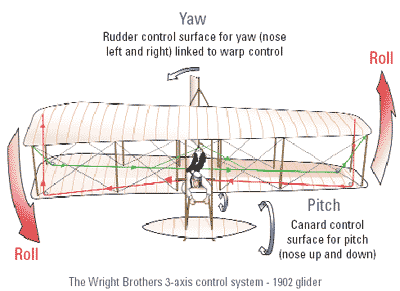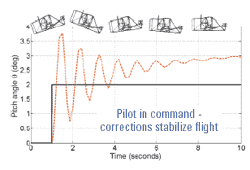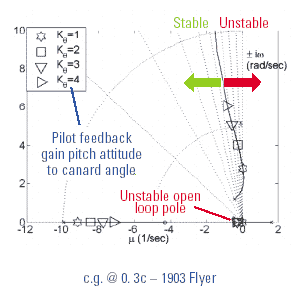
Flight Science & Technology Research Group
The Wright Brothers Project
Department Home Page
Courses
Simulation Facilities
Feedback: mdw@liv.ac.uk
Flight Stability and Control
One of the Wrights’ most innovative
solutions for the problem of flight was their
patented ‘wing-warping’ mechanism for
control in roll. Inspired by birds, they used
a torsional action of their wings to create
more lift on one side of the wing than
the other. In the Wrights’ design the pilot
moves his hips in a cradle, moving the
cables and thus warping the wings.
A third axis of control in yaw was
implemented in order to deal with a
secondary effect of the wing-warping,
namely adverse yaw. This effect was
caused by the wing creating more lift
generating increased drag, yawing
the aircraft away from the desired
turn. The moveable rudder was
devised to create yawing moments
counteracting the adverse yaw.

The Wright brothers gliders and Flyers were unstable in pitch. Any disturbance, if left unchecked, caused the motion of the aircraft to diverge rapidly.


The Wrights knew that having sufficient control was more important that stability. This situation shows that their unstable aircraft could be flown by a skilled pilot, although the high level of instability of their 1903 Flyer especially, made controlled flight a very demanding task.
Using modern analytical tools such as a root locus diagram (see opposite), the Liverpool Wright project has been able to investigate the stability and control of the Wright aircraft.
